South Asia Conference of the Pacific Northwest: Abstracts
- Panel One: “Religion and Education”
Thinking With, Against, and Beyond Kaśmir Śaivism
J.M. Fritzman and co-authors Sari Berger & Brandon Vance, Associate Professor, Philosophy, Lewis & Clark College
fritzman@lclark.edu
During the 9th-12th centuries in Kaśmir, India’s northernmost state, interconnected lineages are devoted to Śiva. The monistic lineages believe that everything is Śiva, that the universe is his manifestation. Kaśmir Śaivas are theistic, maintaining that Śiva is analogous to a person with agency. However, they also claim that Śiva necessarily manifest himself, that how he manifest himself is necessary, and that he has no awareness of his manifestation. They accept the doctrine of satkāryavāda, moreover, according to which an effect pre-exists within its cause. This suggests that the universe, as the effect that pre-exists in Śiva, is epiphenomenal, itself has no ability to produce effects. Hence, everything that occurs in the universe is wholly determined.We argue that the claims that Śiva is unaware of and unaffected by his manifestation, as well as the doctrine of satkāryavāda, should be rejected. The universe is Śiva’s manifestation, in the first instance, but humans have agency and freedom. Their actions have an effect on Śiva. Hence, Śiva develops, partially in response to us.
Framing the Avadāna, Framing the World
David Fiordalis, Associate Professor and Chair, Religious Studies, Linfield College
dvf@linfield.edu
The one-hundredth story of the Avadānaśataka, “A Hundred Buddhist Tales,” dramatically shifts the narrative context from the lifetime of the Buddha to two hundred years after the Buddha’s death to the time of King Aśoka. The primary source of knowledge and authority in the story becomes the Buddhist monk, Upagupta, who tells a past-life story connecting his own context to a time shortly after the Buddha’s death. In this way, the story provides a glimpse of an historical context for the emergence of avadāna literature, but it also frames the preceding ninety-nine stories of the collection in a narrative. This paper will explore how the story achieves this dual purpose: Connecting past-life stories to present-life contexts and the practice of storytelling to concrete circumstances. It argues that the genre itself produces this twofold vision.
Counselling Psychology in India: A Survey of Practitioners
Robinder Bedi (and Pavithra Andrea Thomas), Assistant Professor, Educational Counseling Psychology (and student), University of British Columbia
Robinder.Bedi@ubc.ca
Being a relatively new field in India, there is little known about the discipline of counselling psychology in India and the characteristics of those who identify as counseling psychologists. We recruited 67 Master’s or Doctoral trained professionals who identify as counseling psychologists from 12 different States in India to complete either an online or paper version of a survey. Participants were asked 5 open-ended questions about the nature and state of the profession and its practitioners. Results indicated that participants believed more intensive training with supervised practice was deeply needed, that they were most concerned about the lack of national accreditation and licensure and the widespread public stigma about seeing a counselling psychologist, and that the government should actively work to raise awareness of and create more jobs for the field. The similarities and differences between the field in India and in North America are discussed.
Teaching History of India and the South Asian Region in Ten Weeks: Keeping it Fun and Real
Sylvia Gray, Instructor of History, Education Advisory Council Chair, Portland Community College
sgray@pcc.edu
The community college teaches introductory courses covering broad spans of history to beginning college students (at Portland Community College in ten-week terms). How can courses focused on Asia, about which many students know little or nothing, reach students where they are and help them achieve meaningful outcomes within these confines? This presentation will share resources and techniques I have found effective in ͞HST 105: History of India and the South Asian Region, both in face-to-face and on-line class formats. It will also invite ideas from other participants.
- Panel Two: “Technology and Politics in South Asia”
The Computer in Indian Postcolonial History
Biswarup Sen, Assistant Professor, School of Journalism and Communication, University of Oregon
bsen@uoregon.edu
In 1962, the then Prime Minister Jawaharlal Nehru inaugurated TIFRAC, the India’s first computer, thus ushering in the digital age. This historic event marks an important juncture in the eventual emergence of what I call the Dzinfo-nation.dz An investigation into the history of the computer reveals as it were two arrows of postcolonial time. The introduction of digital technology by the Indian state is, I argue, a consequence of a long tradition of governmentality that stretches back to the very beginnings of the colonial era. The early computer thus stands with hydroelectric dams, steel factories and rocket ships as a symbol of statist nationalism. Yet the computer also represents a second arrow, one that charts the uneasy path of neoliberal development that the postcolonial state would subsequently take. The information sector, I show, was one of the very first sites to implement a silent contract between the state and private capital, and its history thus foreshadowed the era of full-scale liberalization that was to follow.
Delivering Democracy: A History of Electronic Voting Machines in India
Patrick Jones, Doctoral Student, School of Journalism and Communication, University of Oregon
patrick.jones4@gmail.com
In India’s 16th general election in May 2014, 551million out of 815 million registered voters turned out to participate. Engineering an election of this size required 8,000,000 security personnel, 935,000 polling booths and 1.7 million portable electronic voting machines (EVMs). Standardized in 1998 as part of India’s national elections, EVMs are a flashpoint in wide-ranging debates about security, democracy, privacy, and political participation in India. The deployment of EVMs has led to two types of security concerns about EVMs. One set of concerns focuses on technological vulnerability: are these technologies vulnerable to cyber manipulation? Research in this area investigates the design of EVMs. The second set of concerns is about the companies that design electronic voting technologies. Two government-owned companies produce Indian EVMs: Bharat Electronic Limited (BEL) and the Electronics Corporation of India. This paper addresses this second set of concerns by tracing the historical emergence and evolution of electronic voting machines in each corporate context. In doing so, it will attempt to situate Indian electoral technologies within a broader international political economy of voting and contribute to an emerging literature on the relationships between technology, corporate governance, and democracy.
Displaying Rainbow Colors: Dis-embodied Online Activism in Pakistan
Shehram Mokhtar, Doctoral Student, School of Journalism and Communication, University of Oregon
shehramm@uoregon.edu
In June 2015, Facebook launched a transnational campaign to celebrate pride week in the wake of the US Supreme Court’s decision favoring same-sex marriage. Millions of users from all over the world opted to overlay their display pictures with rainbow colors as a part of the campaign. A number of users in Pakistan also followed suit resulting in a huge backlash from various quarters condemning the celebration of pride. In Pakistan, marginalized groups such as Shiites and Baloch still resort to street activism but sexual minorities have not been able to show street presence. In a country where homosexuality is a punishable crime and strict Islamic interpretations make no room for debates on sexuality, technology granted sexual minorities some space to survive. Online presence of queer groups in Pakistan has been mostly confined to secret or anonymous online forums until Facebook’s pride campaign. In the US, the campaign has been critiqued for “co-opting” the rainbow flag, ignoring the long history of street activism for LGBTQ rights. This paper attempts to understand and track the history of dis-embodied online activism of the sexual minorities in Pakistan in place of street activism in the context of its post/colonial history.
Imagining Outsourcing through Television
Sareeta Amrute, Assistant Professor, Anthropology, University of Washington
amrutes@u.washington.edu
The computer is a fraught technical artifact, linked in the popular imagination simultaneously to the power of the machine over human life and the power of the people over state authority. In this paper, I follow how the computer as technical artifact is used to reimagine economic and social subjects on two sides of the ‘outsourcing’ divide, in the United States and in India. I consider the computer and the computer programmer as they make their way into popular culture through television as my cases in point. The two shows I discuss, “Outsourced” in the U.S. and the Marathi-language “Eka Lagnachi Dusri Goshta” in India, condense the already circulating meanings of the computer for U.S. and Indian audiences, and produce an American and Indian version of the computer through explicit comparison with how the ‘other side’ organizes computer-human relationships. They help produce a version of computer as artifact that both sets in motion and responds to national scenes of economic and social aspiration and anxiety. Through comparison, I will shed light on how the economics of global IT work enact tropes of technical knowledge, masculine aspiration, and the life of the nation.
On Cell Phones and Social Capital for Women in South Asia-Pakistan
Farah Azhar, Doctoral Student, School of Journalism and Communication, University of Oregon
faraha@uoregon.edu
The research looks at the use of cell phones in a fragile state of South Asia-Pakistan. More specifically, the research examines how the use of mobile money impacts social capital of rural women. It analyses which relationships are strengthened or weakened by the use of mobile money and to what degree does mobile money lead to rural women’s empowerment in Pakistan. Furthermore, to what extent is the literacy barrier hindering the adoption of mobile money among rural women is also examined. The theoretical groundings of this research stem from Roger’s Theory of Diffusion of Innovation and Bourdieu’s Theory of Practice and Cultural Reproduction. For this research, mixed method approach would be used. A sample size of 50 women would be surveyed which would allow me to identify 15 women for in-depth interviews. The research would be carried out in outskirts of Lahore which is predominantly rural.
On Interracial Marriage between Indian and British Citizens
Katie Blank, Doctoral Student, History, University of Washington
kblank5@uw.edu
Throughout the first five decades of the twentieth century, scores of British women wrote to the India Office in London about the legality of their marriage (with Indian men) outside of Britain. In nearly every case, they replied that the women would immediately be subject to their husband’s personal law and left vulnerable if their husband decided to take another wife. This fear that a British woman would eventually be subjected to a polygamous marriage against her will became so prolific that it appeared in news tabloids consistently for decades. This issue of the legality of interracial marriage (rather, the implications of cross national and cross cultural marriage) was at the crux of many diplomatic conflicts, wherein the British government argued that interracial marriage between a white woman and Indian ruler was both legally and culturally incompatible, rendering their marriage illegitimate and thus unable to produce legal heirs. My paper will consider both commonplace and notable instances of such marriages, and how the taboo of marriage between a British woman and Indian man became a way to further convey the depravity of Indian culture and acquire more territory through the doctrine of lapse.
Wailing to be Heard: Sikh Women’s Mourning an the Culture of Reform
Kiran Sunar, Doctoral Student, Asian Studies, The University of British Columbia
coeurdelakaur@gmail.com
Siyapaa, loosely defined as mourning, is the ritual practice of Punjabi women’s expression of collective grief at the loss of a loved one. The ritual involves the performance of grief in the public, including wailing and self-flagellation. Today, whenever the word siyapaa is mentioned in India, the response is laughter; in fact, siyapaa has come to stand in for the word, “problem.” How does a word that means wailing and mourning come to be regarded as a site of humor? The concept of siyapaa provides a fecund site for investigation into the politics of gender, marginality, and Sikh reform. Examining literary representations of siyapaa from 1898 to 1999, this paper will use three texts: Bhai Vir Singh’s Sundari, hailed as the first Punjabi novel and an important source for Sikh ideals and ethics, Bhai Sadhu Singh’s 1921 poem Churrelan which holds the form of a siyapaa while wholly disapproving of the practice, and Shauna Singh Baldwin’s 1999 What the Body Remembers, a post-memorial site for siyapaa.
“This is Where You Belong” –Representations of the Ideal Woman in Pakistani Television Serials from the 1980’s to the Present
Nabeeha Chaudhary, Graduate Alumnus, Jackson School of International Studies, University of Washington
chaudhnz@gmail.com
A certain realism, and complexity of characterization of women, in earlier Pakistani television serials has made way for one-dimensional characters stereotyped along rigid dichotomies and understandings of traditional/Western, conservative/modern, religious/liberal, and good/evil. Limited functions and setting, along with the themes of present day plays, seem to focus on the idea that good women belong in the private sphere (i.e. at home). Themes drawn on include these serials’ definitions of public/private spaces and the boundaries between them, the role of marriage and companionship, and the constant negotiation of tradition with the “modern.” Two broad factors explaining how these themes are tackled are: (i) state-media relations at the basic level of media censorship and liberalization and (ii) the intersection of state-media relations with popular piety culture and broader aspects of mainstream politics. Through the lens of the representation of gender, I view how all these forces interact and how they influence popular culture.
Recitational Readings: The Politics of Sound and Meaning in Women’s Quranic Engagement in Pakistan
Nadia Loan, Instructor, Women and Gender Studies, University of Oregon
nloan@uoregon.edu
Everyday rituals of worship in the Islamic tradition conventionally depend on the materiality of sound rather than the symbolic meaning of the word to shape Quranic textual engagement.However, in recent years in Pakistan, this form of Quranic engagement (recitation) is increasingly viewed by urban Pakistani women as inadequate for the demands of modern Islamic life. As such programs of religious learning privileging an interpretation (tafsir)of the Quranic word, have grown exponentially over the last two decades in many Pakistan cities. This paper explores the manner in which interpretive modalities (tafsir) are recombined with sonic practices of audition and recitation to mediate women’s engagement with the Quran. I suggest that rather than consider the emphasis on interpretive modalities as a substitution of sound with meaning, we consider how sound and meaning are productively reconfigured to give shape to a new form of religious textual engagement that I term recitational readings.
Re-conceptualizing Women’s Agency in Rural Punjab, Pakistan
Sarah Ahmed, Doctoral Student, Sociology, University of Oregon
sahmed2@uoregon.edu
What is agency in the South Asian context? Agency, as defined by notions of Western Feminism, means little to South Asian women, especially in rural areas. What, then, does women’s agency in South Asia look like? Theoretical ideas of agency must contend with the lived experiences of women. In this talk, I discuss participant observations and interviews conducted in small rural villages across Southern Punjab, Pakistan, wherein women express ideas of agency radically different from the Western context. I contend that agency for women in these areas is transforming, given the changes occurring as a result of socio-economic factors: including the changing pattern of men’s employment, and WHO’s polio campaigns. Consequently, I argue that agency, as we recognize, needs to be reconceptualized to enable us in seeing and understanding agency in every day activities in places where we think it unlikely so, such as rural villages in Southern Punjab, Pakistan.
- Panel Four: “Politics and History”
On the Relationship Between South Asian and the Commonwealth of Nations
Taylor D.H. Rockhill, Doctoral Student, South Asian Studies, University of Washington
tayroc@uw.edu
My research focuses on the evolving relationship of South Asia with the Commonwealth of Nations, particularly focusing on the Commonwealth after the 1991 Harare Declaration which shifted the Commonwealth’s focus away from preserving ‘cultural ties’ and history to focusing on expanding trade ties, increasing government accountability, and development. My research begins looking at the connections between India and Commonwealth countries in southern Africa, particularly India’s connections to Mozambique, a former Portuguese colony that had joined the Commonwealth in 1996.
I am keenly interested in the Commonwealth as a mechanism for South-North linkages as well as its potential as a ‘driver for development’. I believe that closer inspection of the Commonwealth could provide us insight into the very nature of International Organisations (IO), particularly how they connect with member governments, NGOs, and local populations. I seek to expand existing Political Science/International Relations literature on the nature of IO-Government interaction, and attempt to figure out how IOs affect both national sovereignty as well as whether or not IOs possess a certain amount of autonomy themselves. (The Commonwealth being no longer inherently British). I am excited for the opportunity to present this at the 2016 SACPAN conference, and am eager to receive feedback.
On the Third Indo-Pakistan War and the Emergence of Bangladesh
Mohammad Shafiqur Rahman, Doctoral Student, Political Science, University of Oregon
mrahman@uoregon.edu
The nine-month long violent civil war in East Pakistan in 1971, its culmination through the third Indo-Pakistan War and emergence of Bangladesh as an independent country is arguably the most significant series of political events in South Asia since 1947. Legacies of those events are still vigorously present in current Subcontinental domestic politics and international relations. Srinath Raghavan has argued in a recent widely-read book that the creation of Bangladesh in 1971 was not an inevitable outcome but a product of contingency, world historical developments and choices made by political actors. In this paper I argue from a framework of Neoclassical-realism that not only the separation of the two halves of Pakistan was determined but also a violent parting was highly probable. I also argue that contingent and individual choice-based accounts of the events in 1971 help perpetuate misperception in current politics of the subcontinent and accepting the inevitability of the emergence of Bangladesh would go a long way in normalizing relations between countries.
On Narendra Modi’s Election Campaign for India’s Parliament
Rucha Ambikar, Assistant Professor, Sociology, Bemidji State University
rambikar@bemidjistate.edu
Narendra Modi ran an American Presidential style election campaign in the last Parliamentary elections of India and in his victory has emerged as one of the most charismatic leader of India in recent years. His savvy use of social media, his fiery speeches, his self positioning as a humble tea seller – all have been credited for his charismatic leadership style. While the caste and class designations of his supporters – who often border on the fanatical – are well known to analysts of Indian politics, I propose to examine the nature of their support for Modi. Are his followers supporting a cult of personality, or does Modi signify an aspirational form of nationalism that speaks to their patriotism? I seek to uncover why Modi succeeds in retaining the loyalty of his supporters and what this insight might inform us as about the changing imagination of the future of India’s polity.
The Great Game Abroad – Late Imperial Internationalism and Britain’s South Asian Intelligence Agents
William Bamber, Doctoral Student, Near and Middle East Studies, University of Washington
wbamber@uw.edu
Much has been written in recent years on the Ghadar movement and its subversion of international imperial linkages and cosmopolitanism for anti-colonial ends. Yet the Ghadarites were far from the only players in this game. This paper considers their less-heralded counterparts, the many South Asians who exploited these same possibilities as agents or informers in the service of the British state. Not only were they widely engaged against ‘seditious’ activities concerning India itself, but also in pursuit of British interests in the Middle East and beyond, where South Asian identity opened up possibilities and confidences unavailable to British operatives. Drawing on Ottoman and Turkish sources, this paper reflects on one of the elite, educated cadre of agents employed directly by the SIS, Mustapha Sargil, who was sensationally unmasked in revolutionary Ankara in 1920, and the issues of identity, agency and allegiance in this period arising from his case.
From Bo Trees to Buddha Bones: Nehruvian Buddhism and the Poetics of Power
Douglas Ober, Doctoral Student, Asian Studies, University of British Columbia
douglasober.ubc@gmail.com
As soon as Prime Minster Jawaharlal Nehru gained rule over a newly independent India in 1947, his Cabinet began orchestrating a number of state programs to promote Buddhism both in and outside of the new state borders. From the export of Buddhist relics to distant lands to Buddhist symbols on the nation’s flag, the secular Indian state took on cakravartin (wheel-turning)-like qualities in ways that were entirely conducive to the political and social visions of Nehru and key members of his Cabinet. This “Nehruvian Buddhism,” as I call it, had two key features: 1) it was a secular force aimed at integrating divergent loyalties into a wider national consciousness and 2) it was a ‘soft power’ aimed at yielding wide influence among the postcolonial order in Asia. I will discuss how these programs fit Nehru’s international diplomatic objectives and briefly consider their continued influence in India today.
Nationalism, Language Policy and Peoples’ Mother Tongue Rights in Bangladesh
Zahid Akter, Doctoral Student, Linguistics, University of Oregon
makter@uoregon.edu
Bangladesh has at least 40 small languages with Bangla spoken by about 90% of its population. Historically, the country played an important role in fighting for its people’s mother tongue when on Feb 21st, 1952 scores of Bangladeshi students gave blood to assert their linguistic rights (the day that UNESCO later recognized as the International Mother Tongue Day). However, such a great example for people’s mother tongue rights seems to have been appropriated largely by a Bangla-based nationalism since the nation’s constitution recognized Bangla as the only national language while granting no status to other languages. A Bangla-based nationalism is also manifested in the way that the post-independence regimes have implemented Banglee (majority ethnic group speaking Bangla) settlements and unleashed military repressions in the regions where small ethno-linguistic groups live. Amid these continued setbacks, however, the country has taken at least two positive steps toward the indigenous groups. One of them is the initiation of Parbatya Chattagram Chukty (Chittagong Hill-Tracts Treaty in 1996) and another is passing of the National Education Policy-2010 that makes some commitments to indigenous peoples’ linguistic rights. It is in these contexts that I will critically examine Bangladesh’s multifaceted political-social-educational approaches and actions toward its small ethno-linguistic groups to see what possible ramifications they have for their languages and language rights. In doing so, I will also take stock of the diverse forms of resistance arising in the grassroots that must play a role in shaping the de facto language policy and the peoples’ linguistic rights.
- Panel Five: “Media, Language & Literature”
On “Orientalism” and Portrayals of South Asian Culture in Video Games
Ranjini Ray Chaudhury, Doctoral Student, Jackson School of International Studies, University of Washington
rrc8@uw.edu
As our awareness expanded form Edward Said’s 1978 publication “Orientalism,” any and all popular representations of South Asia took on a predictable nature. Entertainment media, for example, have always used the profitability of exoticism to sell their own imagined depictions of South Asian culture. But how has this imagination changed in recent years in new forms of entertainment, such as video games? Ubisoft Montreal, the creators of the popular video game Far Cry 4, have endeavored to release a video game to allow players to appreciate an authentic Nepali cultural experience, albeit in a fictional narrative world. From as early as five months prior to the game’s release in late 2014, the online public burst in protest over the promotional images released. Since then, the game, its images, and its corresponding documentary have been scrutinized by the global online public. In my paper, I reconsider Orientalism through my analysis of Far Cry 4.
Music, Dramaturgy & Mourning Rituals: Locating the Performance of the Karbala Narrative in Sehwan, Pakistan
Shehram Moktar, Doctoral Student, School of Journalism and Communication, University of Oregon
Shehramm@uoregon.edu
On the tenth of the first Islamic month of Muharram, Shi’ite Muslims all over the world annually commemorate the martyrdom of prophet Muhammad’s grandson Husain. Husain died in the ten-day battle of Karbala, Iraq, with his followers in 680 AD. Highly ritualized and dramatic public performances in commemorative ceremonies all over the world have kept the memory of Husain’s tragic death alive for centuries. Some rituals in Muharram mourning processions are common across national and regional boundaries but they can vary according to local customs and traditions. This paper attempts to explore the rituals of mourning in Sehwan, a small town in the Southern province of Sindh, Pakistan. Rituals in Sehwan are unique as they make use of music, mainly Shehnai, a musical instrument generally associated with festivities, along with drums, an important part of their mourning processions with synchronized movements and other dramaturgical elements to create a memorial narrative of the past. Sehwan is known for the ritual of spiritual ecstatic dance, dhamaal, performed at the shrine of Sufi saint, Lal Shahbaz Qalandar, all year long except for the first ten days of Muharram. Embedded in its local expressive traditions, rituals of Muharram create their own unique identity. In the context of national and transnational reformist movements, this paper posits that rituals in Sehwan help reconstitute national and transnational identities by their very existence.
Zumurrud Shah in the Mughal Imagination: The Historiography of the Hamzānāma and Afghan-Mughal Relations in Pre-Modern India
Mariam Sabri, Doctoral Student, South Asian Studies, Jackson School of International Studies, University of Washington
msabri@uw.edu
In recent years the Hamzānāma, undoubtedly the greatest oral epic of Mughal India, has generated considerable interest amongst scholars. While the Hamzānāma has been studied at great length by philologists, literary historians and art historians, it has received relatively little attention from cultural and political historians, specifically from an oral history perspective. This is also representative of a larger trend in pre-modern Islamicate intellectual history, where the role of oral tradition in Islamicate societies has been under-studied, as is apparent in the context of Mughal India. The case of the Hamzānāma also signals the larger gap in the political history of Afghan-Mughal relations. Through a study of the portrayal of the character of Zumurrud Shah, the villain of the Hamzānāma, in both material and textual sources from the period, my presentation will analyze the gaps in the existing scholarship on the Hamzānāma and Afghan-Mughal relations and the value of historicizing sources as the Hamzānāma corpus (and the dastāngenre in general) for developing a richer understanding of Islamicate intellectual history and Mughal India.
The work of the Mahāvaṃsa: Poem or Charter?
Kristin Scheible, Associate Professor, Religious Studies, Reed College
scheiblk@reed.edu
The Pāli Mahāvaṃsa � is central to the real and imagined community of Sinhalese Theravādin Buddhists of Sri Lanka, and has been read by scholars, monks, and laypeople as a political “charter” for the moral authority of its particular textual community. Yet within its proem the text explicitly announces its objective: to present a narrative that will engender certain reading strategies and emotional consequences. The Mahāvaṃsa exclaims its literary prowess outright, declaring its purpose to “avoid the faults of that one [the earlier narratives]” and to be “easy to grasp and bear in mind, producing anxious thrill (saṃvega) and serene satisfaction (pasāda), and handed down through tradition.” Moreover, the proem reiterates this claim in the imperative: “Listen to this one causing saṃvega and pasāda, in this way the grounds for making [more] saṃvega and producing [more] pasāda.” The proems explicitly place the two vaṃsas in a literary realm where narrative has power, through the manipulation of human emotions, to transform the hearer and, by extension, the community that sustains the continued relevance of the text. I’ll present some ideas on the literary work of a Buddhist history derived from my forthcoming book (Columbia University Press).
Embracing Humor and Eroticism: Bitextuality in the Vidagdha-madhava by Rupa Gosvami
Genoveva Castro, Doctoral Student, Asian Languages and Literature, University of Washington
castromg@uw.edu
The sixteenth century play Vidagdha-madhava by Rupa Gosvami narrates the love story of Kṛishna and the gopis in Braj. Shlesha or punning is a common device used in the play, and often humor and eroticism are the basis for double readings. The puns help to amplify the erotic meaning which plays an important role in Vaishnava theology. I will analyze various instances of humorous and erotic puns in the Vidagdha-madhava using the framework of Yigal Bronner on simultaneous narration in Sanskrit literature.Bronner states that shlesha gives the poet the possibility to disguise and reveal simultaneously two aspects of the same identity. Krishna’s erotic behavior constitutes a part of his manifold identity and his sensuality is brought up frequently in the puns.The shleshas vary from some words with double meaning in prose to very complex puns in verses that have two completely different readings.
- Panel Six: “Economics and Development”
Counter-Conduct in the Mohallas: New Houses in the Old City
Tariq L. Rahman, Doctoral Student, International Studies, University of Oregon
tlr@uoregon.edu
Urban planning has been a cornerstone of development throughout Pakistan’s history. Modernist housing has been central to the state’s aspiration to move beyond the country’s inherited past, which it associates with backwardness. The construction of everything from modern cities to housing schemes demonstrates Pakistan’s potential to be modern, providing an exemplar to the rest of the nation and legitimating the nation to the rest of the world. Located in the margins of the state, Bhakkar City embodies the past the state simultaneously excludes and desires to include. The latter has entailed the development of the city’s first housing scheme, Gulshan-e-Madina. The emergence of Gulshan-e-Madina initiated a housing transformation in the city, consisting of modern houses being constructed not only in the housing scheme, but the surrounding area as well. Invoking Foucault’s concept of counter-conduct, I argue that the construction of modern houses in mohallas, or the unplanned neighborhoods that characterize Bhakkar City, problematizes the state’s binary of housing schemes and mohallas as modern and backward spaces, respectively. While not external to development discourse, the construction of new houses in the old city nevertheless undermines it by questioning its natural appearance.
Aging the ‘Transnational’: Gender, Sexuality, and Political Form(ulation)s Among Elderly South Asians
Sri Craven, Assistant Professor, Women, Gender, and Sexuality Studies, Portland State University
cravens@pdx.edu
My paper theorizes social justice politics from the perspective of conversations that I had with senior Indians about feminism, queerness, gender, and sexuality. The respondents span two types of ‘transnationals’: Indian diasporics who are citizens of the U.S.; and itinerants who visit the U.S. and live in India. Examining the respondents perceptions of and attitudes to “sex” as it unfolds via social justice politics, as well as consumer and popular cultures, I analyze and theorize how transnational/(im)migration viewed through the lens of my age may be a valuable predictor of what becomes relevant politically to different communities.
Alternate Conceptualizations of Value and Space: Learning from the slum-dwellers of Delhi
Susmita Rishi, Doctoral Student, Interdisciplinary Program in Urban Design and Planning, University of Washington
srishi@uw.edu
The relationship between informal settlements or slums, and planning has always been complicated. With rapid urbanization, informal settlements are more than ever emerging as the places for not only the underprivileged to live, but also the middle-classes. In opposition to the “use” value that others may find in the space, based in conceptions of “exchange” value of land, informal settlements are positioned as the unregulated and “illegitimate” use of land against the backdrop of legitimate notions of planned land use and settlement. Under this paradigm when planners, bureaucrats and middle-class citizens look at these settlements, they see spaces of filth and degradation, having no value except for the land that they stand on. In this paper, I focus on moving beyond this contradiction between exchange and use to reconceptualise value grounded in the residents’ valuing of their everyday spaces. Based in the analysis of 135 semistructured ethnographic interviews and observations at Kathputli Colony, Delhi, I challenge the understanding of informal settlements as spaces of no value to show that for the residents of such settlements, their spaces hold value/s beyond this narrow understanding. Highlighting the different ways in which residents find value in their spaces, I attempt to reconceptualize informal settlements as spaces of legitimate Value.
Corporations, the state, and rural development in India’s new ‘Company Villages’
Sunila Kale, Associate Professor, Jackson School of International Studies, University of Washington
kale@uw.edu
The poorest parts of India measured by per capita income are also some of its richest in terms of natural resources. Throughout this region—which covers a broad belt of eastern and central India—private mining and metallurgy firms have been rapidly establishing new plants and mines over the last twenty years. In displacing populations through rural land acquisition, these firms are reshaping rural socio-economic worlds in large arcs of land peripheral to their mine and plant sites as well as in the newly built settlements that house displaced communities. In these villages and in other peripheral locations, firms through their Corporate Social Responsibility (CSR) budgets are undertaking activities traditionally associated with the state. My project seeks to investigate the new socio-political forms that are emerging out of these processes. I speculate that rather than re-creating the company towns of the past, private firms are creating a new form, the ͞company village.
Development Rhetoric in Bangladesh: A Feminist Critique
Melissa Tennyson, Instructor, ESL Program, Latino Network
melissatennyson1@gmail.com
In this paper I interrogate the development rhetoric in Bangladesh, particularly the rhetoric of two major development institutions: the Grameen Bank and the United States Agency for International Development (USAID). While these institutions approach the question of development in different ways, and with different tools, I argue that they are fundamentally linked on an ideological level—they both announce their aim as developmentalist in character. Second, while they both claim to work in the service of poor women in Bangladesh, they end up exploiting and oppressing poor women.
An Analysis of fuel efficient stoves in Arandu valley of CKNP, Gilgit Baltistan
Razia Bano, Lecturer, Business Management, Karakoram International University – Pakistan
rbano@uoregon.edu
This paper assesses the impact of fuel efficient stoves that have been introduced to 42% of households in the Arandu Valley of the Central Karakoram National Park. This area has suffered severe deforestation during the last several years. It used to take local women one hour to fetch wood but now takes four or five hours; the amount of time necessary is growing at an alarming rate. Furthermore, conventionally used stoves release a lot of smoke inside houses, and smoke inhalation is a significant cause of poor health in these areas. This study assesses how the new stoves helped the local community to save firewood while still enabling local people to have a regular fire to remain warm during the harsh winter. Women have been notable beneficiaries of the new stoves, saving them time and contributing to hygienic conditions.
On Social Movements and Alliance Building in Maharashtra, India
Rucha Chandvankar, DoctoralAnthropology, University of Oregon
ruchac@uoregon.edu
Contemporary democratic discourse highlights the role of social movements in negotiating across social difference so as to build sustainable realities. The work done by social movements towards building alliances across caste and racial boundaries, often disrupts dominant structures of power, while fostering a respect for difference, and an articulation of democratic values. In this paper, I present an analysis of the relationship between social movement organizing, collective action, and alliance building between Adivasis and Dalits in Maharashtra, India. Power exercised through dominant caste ideologies customarily strips Adivasis and Dalits of their dignity. By looking at Sarvahara Jan Andolan, an Adivasi and Dalit social movement in Maharashtra, I stress the link between alliance building and the claiming of dignity by Adivasis and Dalits. I argue that by building alliances, social movements are engaged in a particular form of resistance, which constructs a Gramscian ‘good sense’, enabling the marginalized to articulate just visions of democracy.
- Panel Seven: “New Directions in South Asian Film and Media Studies”
Indian Feminism and the Communicative Network
Sangita Gopal, Associate Professor, English and Cinema Studies, University of Oregon
sgopal@uoregon.edu
The emergence of second wave feminism in India in the 1970s-80s was closely linked to the media revolution that India was concurrently undergoing with the introduction of television and an unprecedented expansion of print and telephony. Feminism’s communicative agency inhered, to a great extent, on how deftly women activists and filmmakers adapted to a new media – television. My paper will examine the career of one such pioneer Sai Paranjpe, a self-described media-meddler, who worked in a variety of genres from comedy sketches to made-for-TV documentaries and drama, but all of whose projects found a popular and accessible idiom for addressing questions of gendered experiences and structural exclusions. I will conclude by looking briefly at how figures such as Paranjpe who migrated between media – television, print, film, theatre and radio – helped assemble an informal but durable feminist communicative network comprised of media-makers, journalists, activists, artists who used their social connections very effectively to get the message out.
On the Portrayal of Women in Bangladeshi Cinema
Abritty Abdullah, M.A. Student, Women Gender and Sexuality Studies, Oregon State University
abdullab@oregonstate.edu
This paper discusses about the portrayal of women in commercial Bangladeshi cinema and how these movies are representation of the larger patriarchal picture of the country. The paper looks at the problem that how commercial movies promote male chauvinism and can help to intensify the discrimination between men and women among the group which these movies are targeted to, which are the wage earners. This paper gives a few examples from the commercially successful movies and connects it with transnational and postcolonial perspective. With help of these two feminist theories the paper builds an argument and provides a framework of the never ending cycle of oppression in this society.
Transnational Strategies of Resistance
Alka Kurian, Lecturer, School of Interdisciplinary Arts and Sciences, University of Washington (Bothell)
Akurian@uwb.edu
This paper looks into mobilization of transregional strategies of resistance embodied and aestheticized through cultural artifacts (posters, paintings, photographs) and documentary cinema in response to political violence, civil strife, and violation of human rights in Nepal and Kashmir. The paper focuses on the tension between women-led peace initiatives and armed resistance to make the point that narratives of social justice founded on the ethics of solidarity, compassion, and empathy tend to get marginalized in a world that is fascinated by mediatized images of women engaged in militarized violence and suicide missions. While debunking the oversimplified arguments that essentialize women as inherently non-violent, the paper nevertheless problematizes the transformative potential of revolutionary violence for the gendered subaltern in postcolonial societies. By focusing the analysis on Julie Bridgham’s Sari Soldiers (Nepal), Kavitha Pai’s There was a Queen (Kashmir), and the visual and performative strategies marshaled by the Association of the Parents of Disappeared Persons (Kashmir), this paper investigates the articulation of feminine agency and voice that locates itself outside heteropatriarchal structures that promote uncritical submission to masculinist leadership.
The Movie Theater as a Technology of Film Form: a Historical Consideration
Sudhir Mahadevan, Associate Professor, Comparative Literature, University of Washington
sudhirm@uw.edu
Is there a relation between what a movie looks like and the space in which it is seen? How has the black box of the movie theater served as an “aesthetic technology” informing the very “look” of the movies? Recent transformations in exhibition spaces have been quite explicitly theorized along with transformations in the form of the popular film. My aim is to draw on this recent work, and ask if similar questions about the relationship between exhibition space and film form, may be posed for earlier periods of Indian film history. What can a consideration of exhibition spaces contribute to historical poetics of Indian cinema?
Back to the conference program

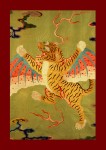
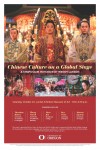 October 24, 2015
October 24, 2015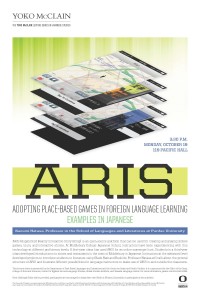 Monday, October 19, 2015
Monday, October 19, 2015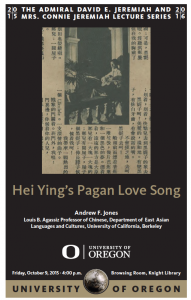 Friday, October 9, 2015
Friday, October 9, 2015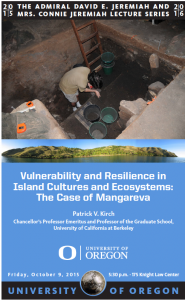 Friday, October 9, 2015
Friday, October 9, 2015
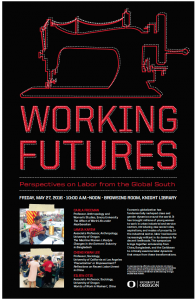
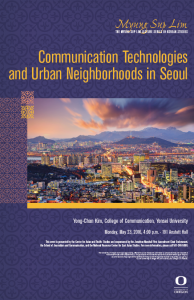
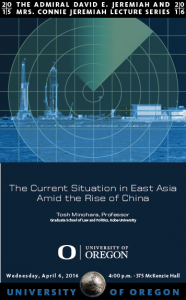
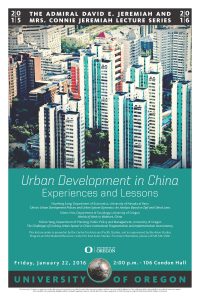
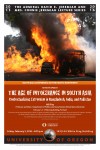
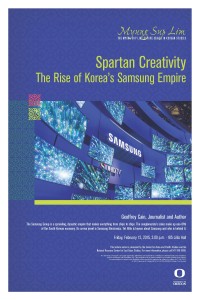
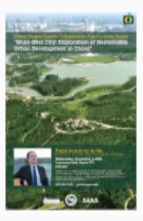
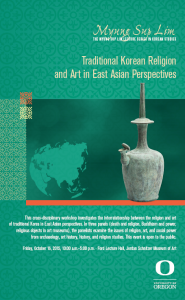
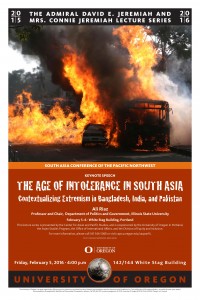
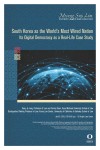
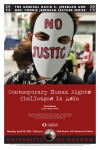
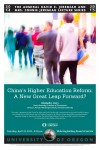
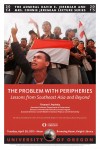
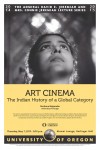
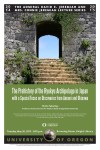
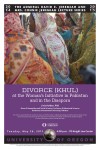

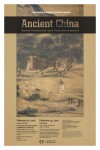
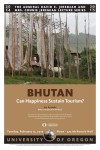
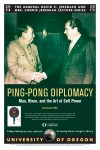
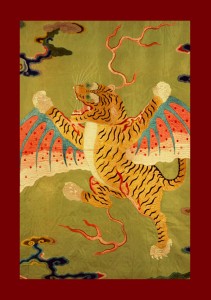
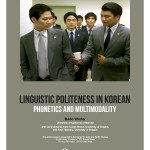

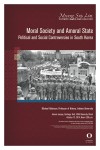
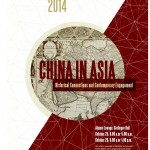
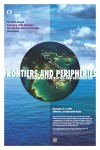
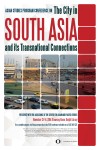
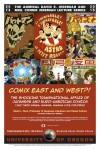
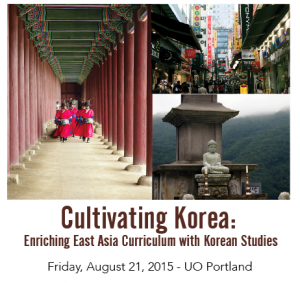
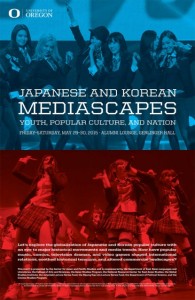
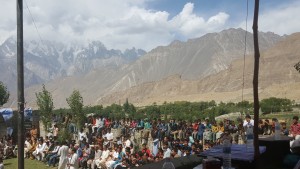

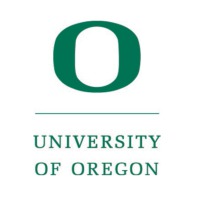
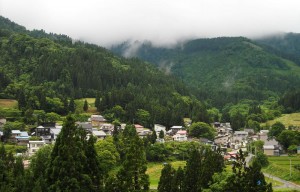 Overview
Overview